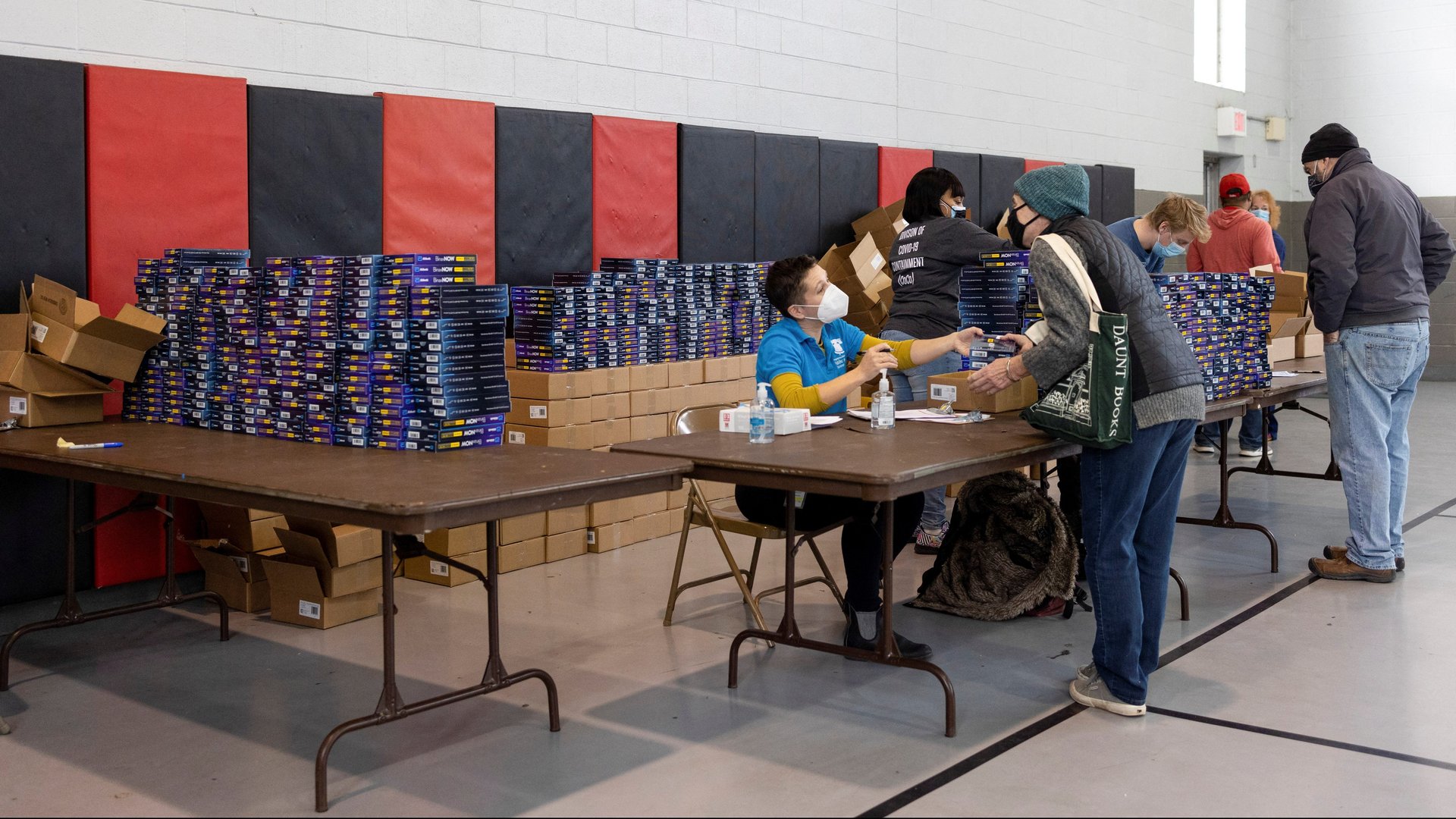Biden’s covid-19 testing plan falls short of public health recommendations
The White House announced measures today (Dec. 21) to increase access to covid-19 testing in response to the omicron variant, which now accounts for the majority of cases in the US. The Biden administration plans to ramp up test production, and will set up new federal testing sites, starting in New York City. It will also offer 500 million free at-home rapid tests to Americans beginning in January.


The White House announced measures today (Dec. 21) to increase access to covid-19 testing in response to the omicron variant, which now accounts for the majority of cases in the US. The Biden administration plans to ramp up test production, and will set up new federal testing sites, starting in New York City. It will also offer 500 million free at-home rapid tests to Americans beginning in January.
But the plan still falls short of the supply needed for Americans to test twice a week, which is what the National Institutes of Health (NIH) has recommended to prevent covid-19 outbreaks.
The White House is playing catch-up
Biden’s plan comes not long after White House press secretary Jen Psaki dismissed the idea of at-home test distribution, even as the US lags behind many other countries in access to rapid testing. In the UK, where the government provides citizens with up to seven rapid covid tests free of charge each day, the country administers more than six times as many tests per 1,000 people as the US.
On Dec. 7, a reporter asked Psaki why Americans’ access to testing is falling short of other countries’. “Should we just send one [test] to every American?” she replied sarcastically.
Two weeks later, that’s essentially what the White House has pledged to do. The administration is purchasing half a billion rapid tests and setting up a website where Americans can request them. White House officials have not yet said how many tests can be ordered at once.
Rapid at-home tests fall short of what’s needed
While it looks like the omicron variant might be milder than other strains of the virus, it’s also spreading at roughly double the rate of the delta variant. And as Americans scramble to get tested ahead of the holidays, US president Joe Biden stressed in a speech at the White House today that “this is not March of 2020.”
Rapid testing is one solution to this problem: An NIH study published in June found that rapid at-home testing conducted two to three times a week is a “powerful and convenient way” for individuals to screen for covid-19 and contain the virus.
But emulating other countries is harder than it sounds. The UK recommends testing those over the age of 11 twice a week and the Kaiser Family Foundation estimates testing at that scale would require a supply of 2.3 billion tests a month in the US, compared to the 500 million the administration has said it will purchase. Even testing just half of the US population each week would still require more than what’s been pledged, around 600 million tests a month.
The White House’s move is a step in the right direction, and makes it likely that rapid at-home tests will be easier to secure in the US come January. But it’s also a bit too little, too late.